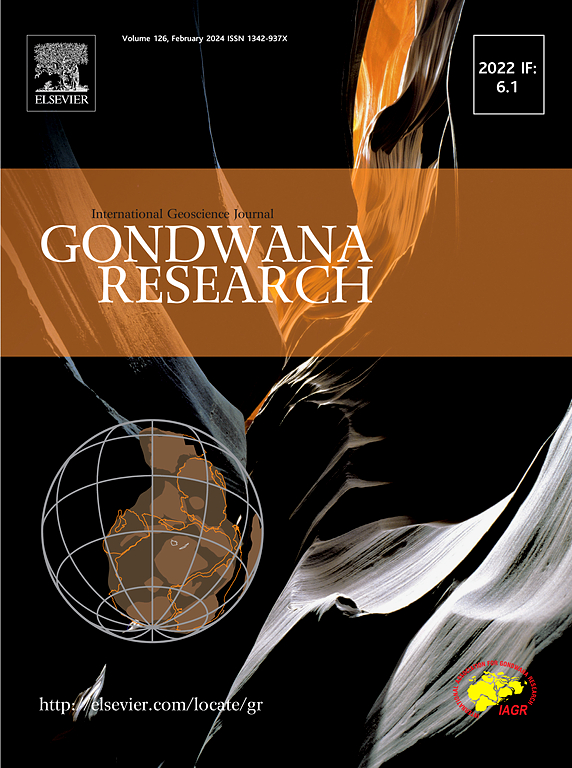一个世纪以来沉积学知识的增长
IF 7.2
1区 地球科学
Q1 GEOSCIENCES, MULTIDISCIPLINARY
引用次数: 0
摘要
虽然科学知识生产的减速已经在领域水平上得到了很好的记录,但子学科内的知识增长模式仍然没有得到很好的探索,主要是由于在较低水平上对论文进行分类的挑战。我们的研究通过使用自然语言过程(NLP)工具来探索沉积学知识的增长,这是地质学中的一个分支学科,从而解决了这一差距。利用SedBERT,一个专门的双向编码器表示从变形金刚(BERT)模型,我们准确地分类沉积学论文,揭示了在过去的120年里,沉积学出版物呈指数增长。从1945年到1980年,出版物每10.3年翻一番,从1980年到2021年每14年翻一番。我们发现,在20世纪50年代至70年代期间,沉积学发生了重大的范式转变,这一时期被称为沉积学的“黄金时代”,其特点是词汇多样性增加,引用模式短视。在“随大流”战略的推动下,随后的研究多样性下降导致了后黄金时代知识扩张的停滞。我们的研究阐明了沉积学研究的动态景观,并为分析子学科知识的演变提供了一个框架。本文章由计算机程序翻译,如有差异,请以英文原文为准。

A century of knowledge growth in sedimentology
Although the deceleration in scientific knowledge production has been well documented at the level of fields, the patterns of knowledge growth within subdisciplines remain poorly explored, primarily due to challenges in classifying papers at lower level. Our study addresses this gap by employing natural language process (NLP) tools to explore the growth of sedimentological knowledge which is a subdiscipline within geology. Utilizing SedBERT, a specialized Bidirectional Encoder Representations from Transformers (BERT) model, we accurately classify sedimentological papers, revealing an exponential growth in sedimentological publications over the past 120 years. Publications have doubled every 10.3 years between 1945 and 1980, and every 14 years from 1980 to 2021.We identify a significant paradigm shift during the 1950 s-1970 s, a period known as the ’Golden Age’ of sedimentology, characterized by increased lexical diversity and myopic-referencing citation pattern. A subsequent decline in research diversity, driven by a ’follow-the-crowd’ strategy, has led to a stagnation in knowledge expansion in the post-Golden Age. Our study illuminates the dynamic research landscape of sedimentology and offers a framework for analyzing the evolution of sub-disciplinary knowledge.
求助全文
通过发布文献求助,成功后即可免费获取论文全文。
去求助
来源期刊

Gondwana Research
地学-地球科学综合
CiteScore
12.90
自引率
6.60%
发文量
298
审稿时长
65 days
期刊介绍:
Gondwana Research (GR) is an International Journal aimed to promote high quality research publications on all topics related to solid Earth, particularly with reference to the origin and evolution of continents, continental assemblies and their resources. GR is an "all earth science" journal with no restrictions on geological time, terrane or theme and covers a wide spectrum of topics in geosciences such as geology, geomorphology, palaeontology, structure, petrology, geochemistry, stable isotopes, geochronology, economic geology, exploration geology, engineering geology, geophysics, and environmental geology among other themes, and provides an appropriate forum to integrate studies from different disciplines and different terrains. In addition to regular articles and thematic issues, the journal invites high profile state-of-the-art reviews on thrust area topics for its column, ''GR FOCUS''. Focus articles include short biographies and photographs of the authors. Short articles (within ten printed pages) for rapid publication reporting important discoveries or innovative models of global interest will be considered under the category ''GR LETTERS''.
 求助内容:
求助内容: 应助结果提醒方式:
应助结果提醒方式:


